The Hudson River School Mid-19th Century American Art
Get a Hudson Certificate of Authenticity for your painting (COA) for your Hudson drawing.
For all your Hudson artworks you need a Certificate of Authenticity (COA) in order to sell, to insure or to donate for a tax deduction.
Getting a Hudson Certificate of Authenticity (COA) is easy. Just send us photos and dimensions and tell us what you know about the origin or history of your Hudson painting or drawing.
If you want to sell your Hudson painting or drawing use our selling services. We offer Hudson selling help, selling advice, private treaty sales and full brokerage.
We have been authenticating Hudson and issuing certificates of authenticity since 2002. We are recognized Hudson experts and Hudson certified appraisers. We issue COAs and appraisals for all Hudson artworks.
Our Hudson paintings and drawings authentications are accepted and respected worldwide.
Each COA is backed by in-depth research and analysis authentication reports.
The Hudson certificates of authenticity we issue are based on solid, reliable and fully referenced art investigations, authentication research, analytical work and forensic studies.
We are available to examine your Hudson painting or drawing anywhere in the world.
You will generally receive your certificates of authenticity and authentication report within two weeks. Some complicated cases with difficult to research Hudson paintings or drawings take longer.
Our clients include Hudson collectors, investors, tax authorities, insurance adjusters, appraisers, valuers, auctioneers, Federal agencies and many law firms.
We perform The Hudson River School art authentication, appraisal, certificates of authenticity (COA), analysis, research, scientific tests, full art authentications. We will help you sell your The Hudson River School or we will sell it for you.
Hudson River School Members: Albert Bierstadt, John William Casilear, Frederic Edwin Church, Thomas Cole, Samuel Colman, Jasper Francis Cropsey, Thomas Doughty, Robert Duncanson, Asher Brown Durand Sanford Robinson Gifford, James McDougal Hart, William Hart, William Stanley Haseltine, Martin Johnson Heade, Hermann Ottomar Herzog, Thomas Hill, David Johnson, John Frederick Kensett, Jervis McEntee, Thomas Moran, Robert Walter Weir, Worthington Whittredge
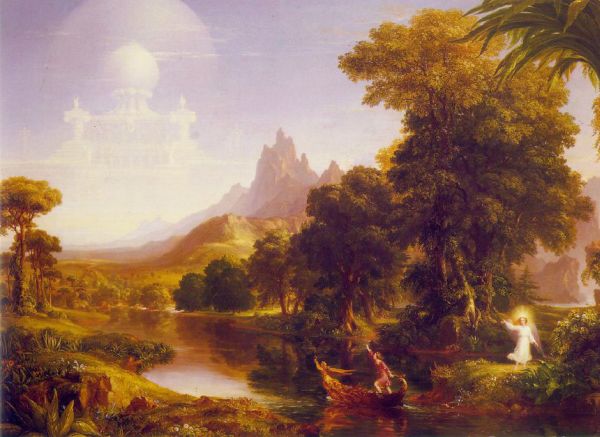

The Hudson River School coincided with a time of social and political changes in the United States. The group therefore attempted to portray the ideals and hopes of a new nation in early stages of development. Their paintings embraced the wildness of the American landscape as it was being threatened by industry and technology. As changes daunted the growing nation, this group of artists wished to preserve the initial concept of the New World in its undeveloped, natural state. The Hudson River School is associated with early conservation movements in America.

Before the 1820s, most American artists painted portraits and historical paintings. The Hudson River School was unique in its portrayal of wilderness as impressive and awe inspiring. Their romantic paintings depict the Hudson River Valley and the surrounding area, including the Catskill, Adirondack, and the White Mountains.
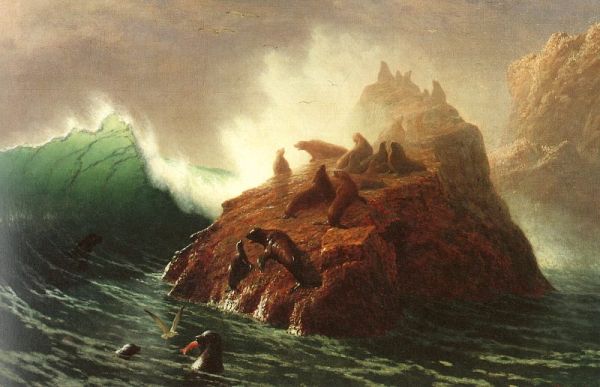
The origin of the name “Hudson River School” is not known, but some believe it to be coined by the art critic Clarence Cook or painter Homer D. Martin after the group’s popularity waned in the late 19th century.
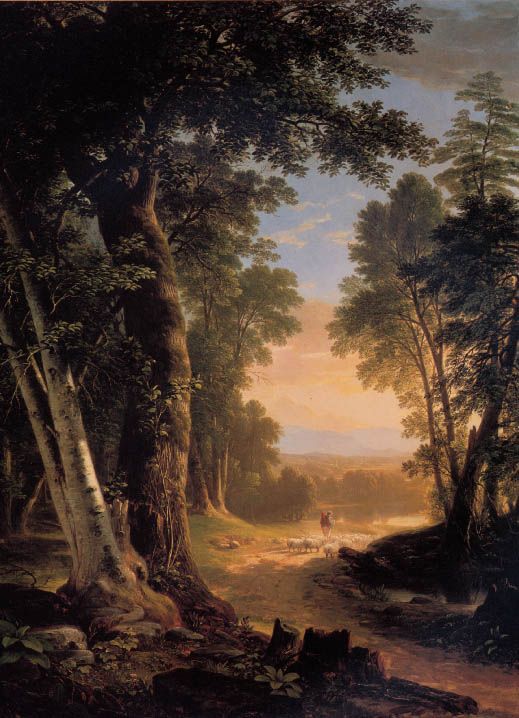

Thomas Cole was an early leader of the Hudson River School and is commonly referred to as the founder. In the fall of 1825, Cole travelled on a steamship up the Hudson and Erie Canal. Cole was the first to paint landscapes of this area of river surrounded by the Catskill Mountains of New York State. Later in 1925 the New York Evening Post reviewed Cole’s work. The English born artist Cole’s close friend, Asher Durand, became a prominent figure in the school as well, particularly when the banknote-engraving business evaporated in the Panic of 1837.
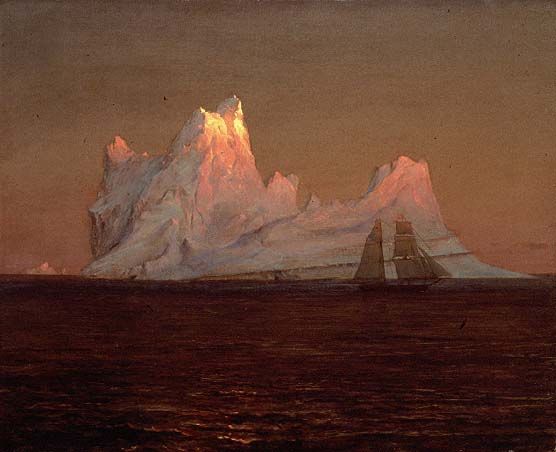
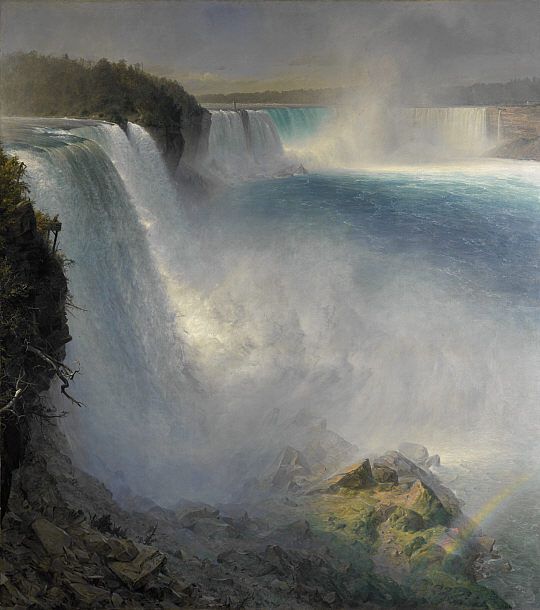
After Cole’s death his close friend Asher Durand assumed leadership of the Hudson River School. The painters were complimented by the great writers Nathaniel Hawthorne, Henry David Thoreau and Ralph Waldo Emerson, who wrote literary works praising nature. Hudson River School artists also drew from European masters such as Claude Lorrain, John Constable and JMW Turner.

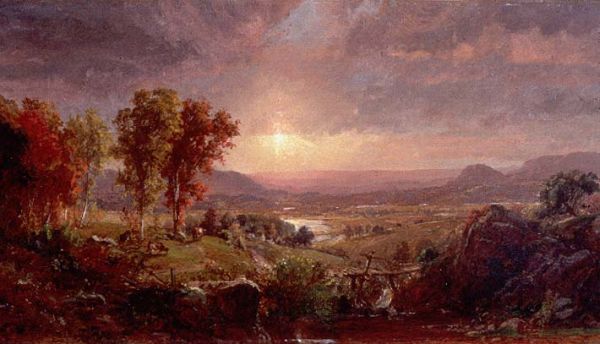
As the movement progressed it expanded in numbers. Artist such as Frederic Church and Albert Bierstadt migrated westward, painting large and dramatic painting. The Hudson River School artists were not plein-air painters, but rather made preparatory sketches in nature, which were later compiled into a final masterpiece.

The many of the Hudson River School Artists helped to found one of the United State’s leading fine art museums, the Metropolitan Museum of Art in New York City. Before their paintings were housed museums, interested viewers would stand in long lines to see a single painting on display. The paintings reminded city inhabitants to preserve land for national and city parks.

Today, many of the Hudson River School’s Paintings are owned by the Wadsworth Athenaeum in Hartford, Connecticut. Their collection included numerous works by Thomas Cole and Frederic Edwin Church. Other collections of Hudson River School paintings are concentrated in museums throughout the Northeast and in private collections internationally.

Do you think you own a historical Hudson School River painting? Contact us. We are the experts on the Hudson River School.
Reviews
1,217 global ratings
5 Star
4 Star
3 Star
2 Star
1 Star
Your evaluation is very important to us. Thank you.
